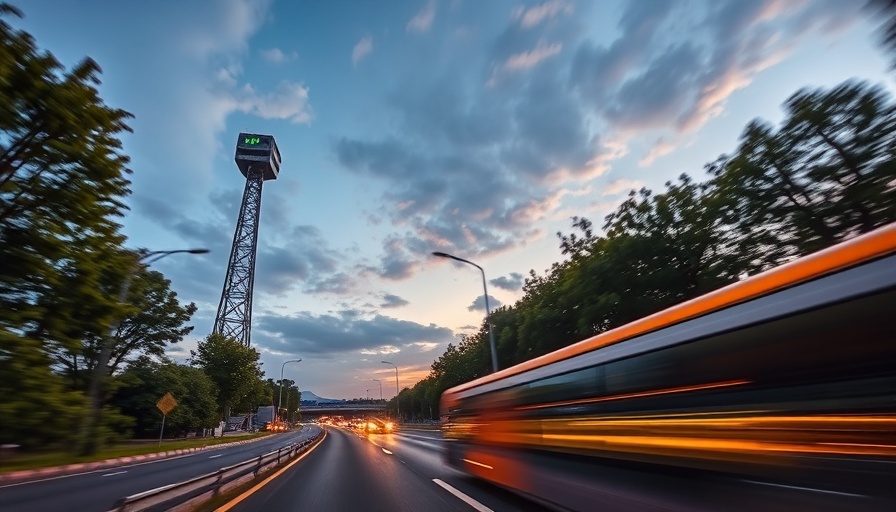
Revolutionizing Road Safety: The Role of AI in Distracted Driving
In a bold move to enhance road safety, several states in the U.S. are deploying AI-powered traffic cameras to combat the pervasive issue of distracted driving. The introduction of 'Heads Up' cameras, inspired by trials in Europe, demonstrates how technology can play a pivotal role in improving public safety. These innovative systems are not just catching offenders; they are reshaping our approach to vehicular safety.
How AI Traffic Cameras Work
Designed by the Australia-based Acusensus, these cameras capture images of every passing vehicle, focusing on the driver and license plate. With the capability to operate under various weather and lighting conditions, these fixed or mobile trailers analyze images in real time. If the AI detects potential violations—like a driver engrossed in their phone or not buckled in—it provides a confidence level before alerting law enforcement for human review. This blend of technology and human discretion not only ensures that tickets are justified, but also promotes accountability within the policing process.
Impact on Driving Behavior and Public Awareness
The introduction of AI cameras has already shown promising results. For instance, in Minnesota, the cameras have identified over 100 distracted drivers just weeks after implementation, with projections suggesting tens of thousands could be caught by the end of the month. This significant uptick in detection is not merely punitive; it's an educational tool aimed at modifying driver behavior. The results echo a similar two-month trial in Manchester, England, where more than 3,200 distractions were noted. This creates a narrative where the deterrent effect is expected to influence a broader demographic of drivers to prioritize safety over convenience.
Engaging the Community: Diverse Perspectives on AI Surveillance
The implementation of these cameras has sparked discussions around privacy and civil liberties. Advocates argue that while the technology serves an essential purpose, it must be deployed with careful consideration of rights and data usage. The ACLU has raised concerns about mass surveillance implications and the potential misuse of data collected by these systems. As technology grows, the dialogue around regulatory measures and community engagement becomes paramount.
Future Predictions: The Evolution of Road Safety and Technology
Looking ahead, we can expect further adoption of AI in road safety as cities grapple with the dual pressures of public safety and technological advancements. The trend may evolve beyond traffic cameras to include real-time monitoring systems that integrate with smart vehicles. It heralds a future where artificial intelligence helps create a comprehensive approach to road safety, incorporating predictive analytics to foresee and mitigate accidents.
In conclusion, the integration of AI into traffic management represents a significant step toward safer roads, but it must be managed with vigilance to avoid encroachments on privacy rights. For executives contemplating the adoption of AI solutions, it's a reminder that technology, while immensely powerful, must also be guided by ethical considerations and public trust.
 Add Row
Add Row  Add
Add 




Write A Comment